Roundabout of Peloponnese
Following the routes of Pafsanias
4x4 Off-Road Routes in the region with the history of 2,500 years
A 9-day trip to the lakes, mountains, rivers, history, cities and villages of the Peloponnese
Off-Road 4x4 routes in the heart of the Peloponnese
The Mythology and folklore till the history of modern Greece
Come along the paths of Pausanias to explore the history of the Peloponnese, a 2500-year-old site, driving a 4x4 vehicle on off-road routes.
The 10-day trip guides-travels us from the history and the cities of ancient Greece to the tradition of the past centuries and the modern life of the Peloponnese to taste-get to know traditional tastes of the unique pure products produced by the Peloponnesian land from ancient times until today.
Tour along scenic routes and forest roads, crossing inaccessible paths, we follow the routes of the ancient Greek traveler and geographer Pausanias (2nd century AD) to visit the points mentioned in the myths of Greek Mythology, the ancient temples and the cities that have been preserved till this day, but also the traditional settlements that played a decisive role in shaping the modern history of modern Greece.
Journey to biodiversity and the nature of the Peloponnese.
We walk through gorges, cross rivers, cool and swim in waterfalls and lakes, see caves - nature miracles and climb to high peaks. Routes in the dense forests of the Peloponnese mountains, the ancient olive groves and its seaside coastline.
Come to discover and explore the fascinating, well-known and unknown Peloponnese region with the 2,500 year history.
Day 1 | THE LAKES OF CORINTHIA
Meeting: Athens | Overnight: Kalavryta
Leaving Athens at 80th km of Athens-Corinthos National Highway we see the Corinthos Canal, the channel that defines Sterea Hellas with the Peloponnese.
Entering the Peloponnese, we follow provincial streets to the plateau of Stymphalia's mythical lake.
Then we head to the valley of Zireia in one of the most beautiful mountainous landscapes of the Peloponnese, with the villages of Kastania and Goura to end up in an off-road route to the artificial lake Doxa.
Piknik's stop on the banks of Lake Doxa overlooking the imposing peaks of Helmos and Zireia.
A scenic dirt road in the dense fir tree forest to the village of Planitero, and then we drive under the ancient plane trees, among the dozens of streams of running water, to visit the Cave of Lakes, for a trip in time, to the palace of the fairies of Helmos.
Check-in and dinner in the historic city of Kalavryta.
-
Athens - Kalavryta
160 km Highway & National Road
40 klm Dirt-Road & Off-Road -
Lake Stymphalia
Lake Doxa
Cave of the Lakes
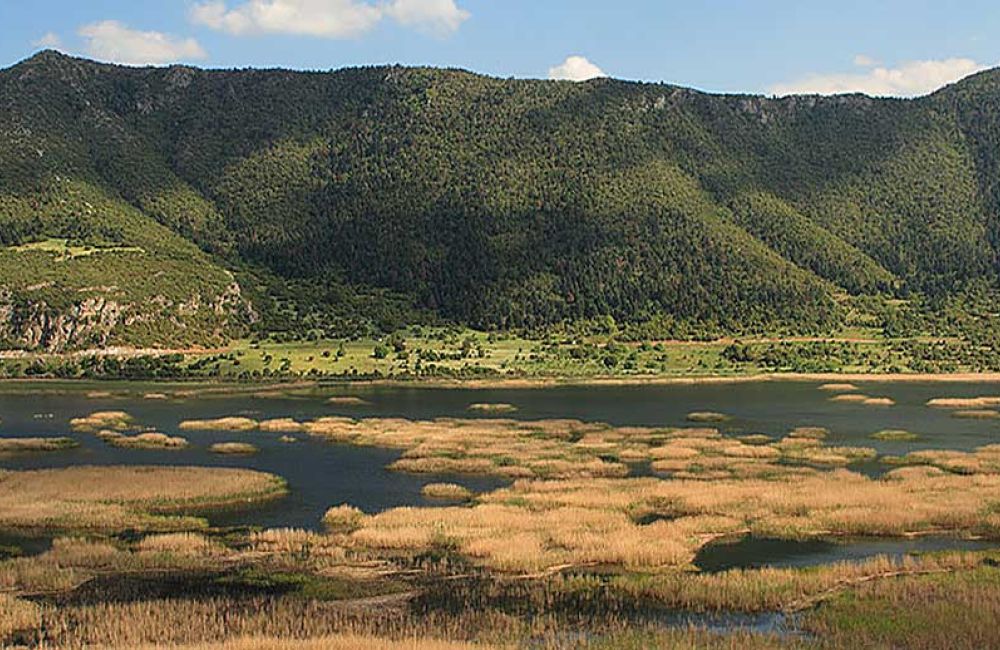
When natural beauty meets the myth!
We cross the Stymphalia Plateau in Corinthia where the 6th Hercules Sanctuary was written.
Today we do not see the... Stymphalian hens but a rare lake that hosts more than 160 species of birds. The site belongs to the European Network of Protected Areas NATURA 2000 and is ideal for bird-watching. On the lake there is the famous environmental awareness museum, which also has a small café on its beautiful terrace overlooking the Styphphia land.
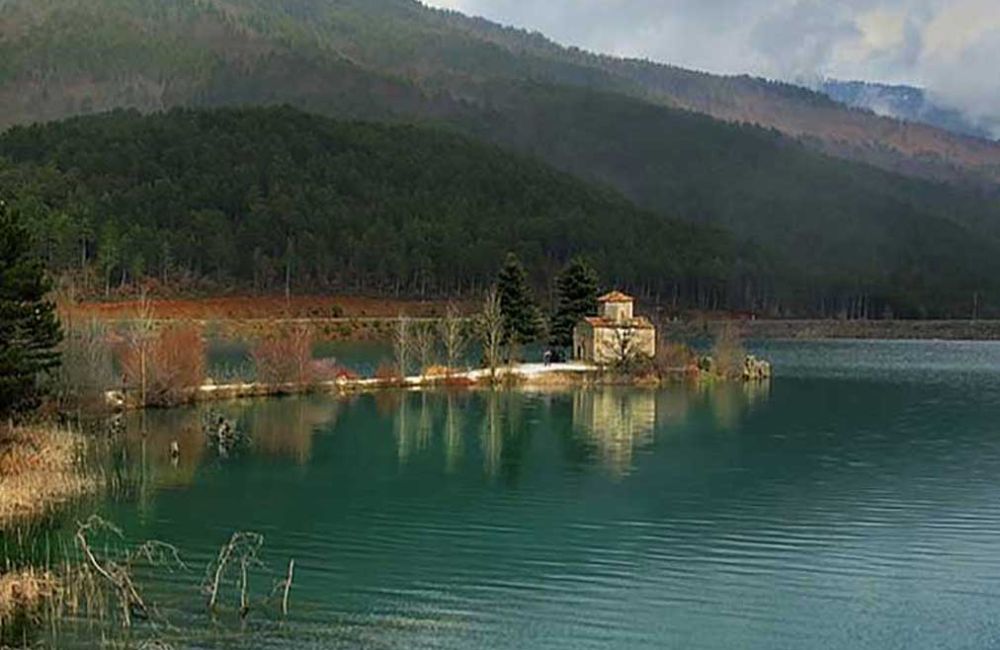
In the arms of the valley of Feneos
In a place like him with unsurpassed ancestors gods and heroes and the dream lake lost among the firs, you owe it from the first moment to let go and enjoy ...
Between Chelmos, Dournouvana and Ziria and with many villages encircling it, almost circularly, the artificial lake is at an altitude of 900 meters. Dense forests adorn the mountains around the lake, while the small chapel of Agios Fanourios is special, on a narrow strip of land, in the water.
In the historical monastery of St. George overlooking the lake, the monks take the visitor-pilgrim traditional sweet rose, which they make themselves.
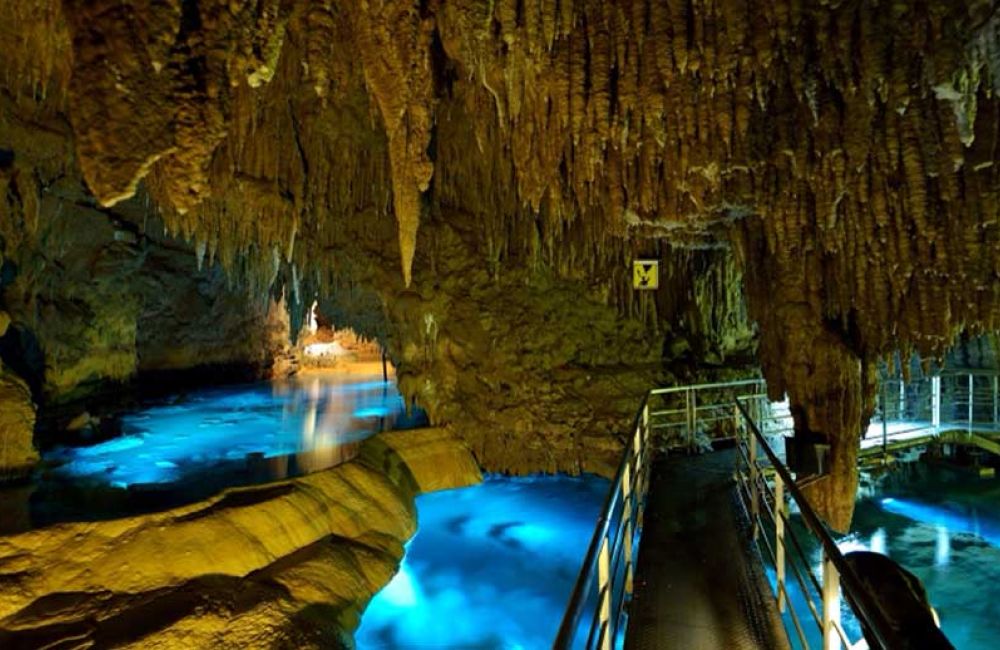
The cave with the 13 lakes
The cave has 13 successive staggered lakes that make it unique in its kind in the world. The entrance is made from an artificial tunnel that leads directly to the second floor of a total of three. The passage of the lakes is made by elevated artificial bridges. The exploited length of the cave is 500 m while its total length is 1.980 m.
The man used the cave from the Neolithic Age. On the lower floor of the cave were found fossilized human bones and various animals, including hippopotamus!
Day 2 | HELMOS & HISTORICAL KALAVRYTA
Kalavryta, Lake Ladonas | Overnight: Lampeia
Morning tour of the city of Kalavryta and the surrounding attractions: we visit the historic monastery of the Great Cave, built in a rock where by the tradition was found the icon of the Virgin Mary that was painted by the Evangelist Lukas, the historic Saint Lavra Monastery and the picturesque station of the cog railway.
Departure from Kalavryta following a mountain route under the shadow of the dense forest. We visit the ancient vineyard of Pausanias, then off road by river and the artificial lake of Ladonas, with destination to the forest of Foloi and the village of Lampeia where we spend the night.
-
Kalavryta - Lake Ladona - Foloi
65 km Paved road
25 klm Dirt-Road και Off-Road -
Artificial Ladon Lake
Vine age: 2,200 years -
Monastery of Saint Lavra & Mega Cave
The bridge of Ladon
Monastery of Saint Lavra
Historic monastery of 961 AD Here is the banner of the swearing of the fighters of 1821, the first one, that is the flag of the Greek nation, which is in prominent position along with the weapons of the fighters of 1821.
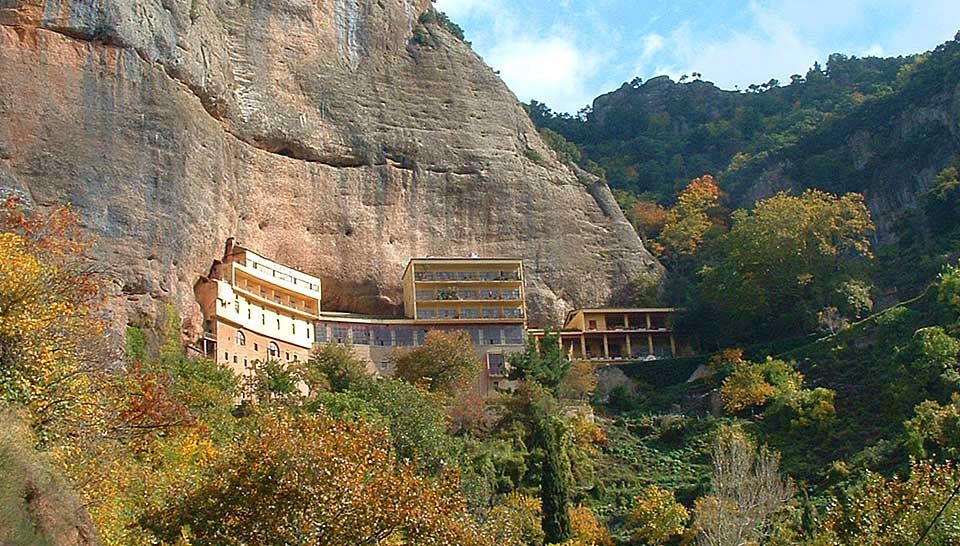
Monastery of the Great Cave
It is awe-inspiring as it is in the shadow of a steep cliff at an altitude of 940 m. It took its name from the vertical rocky complex of Helmos, on which it is built. It is considered the oldest in Greece as it was built in 362 AD. It has a great wealth of heirlooms, including the icon of Virgin Mary, painted by Evangelist Loukas.
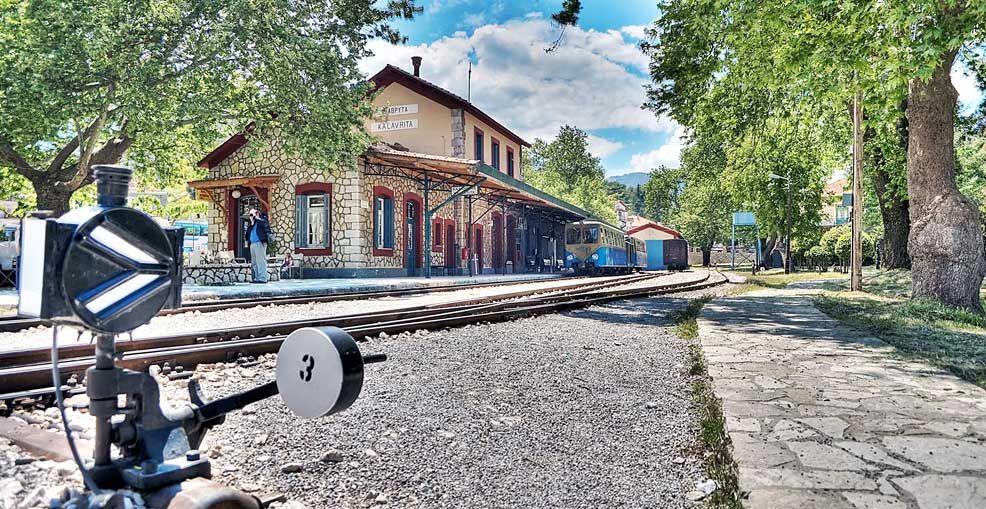
Odontotos Rack Railway
The Odontotos -Cogwheel- from the coasts of the Corinthian Gulf follows the Vouraikos Gorge. After a distance of 22,350 meters, on a slope of up to 175o/oo, within 60 minutes, it ends up in the city of Kalavryta. It has been operating for 120 years since 1896..
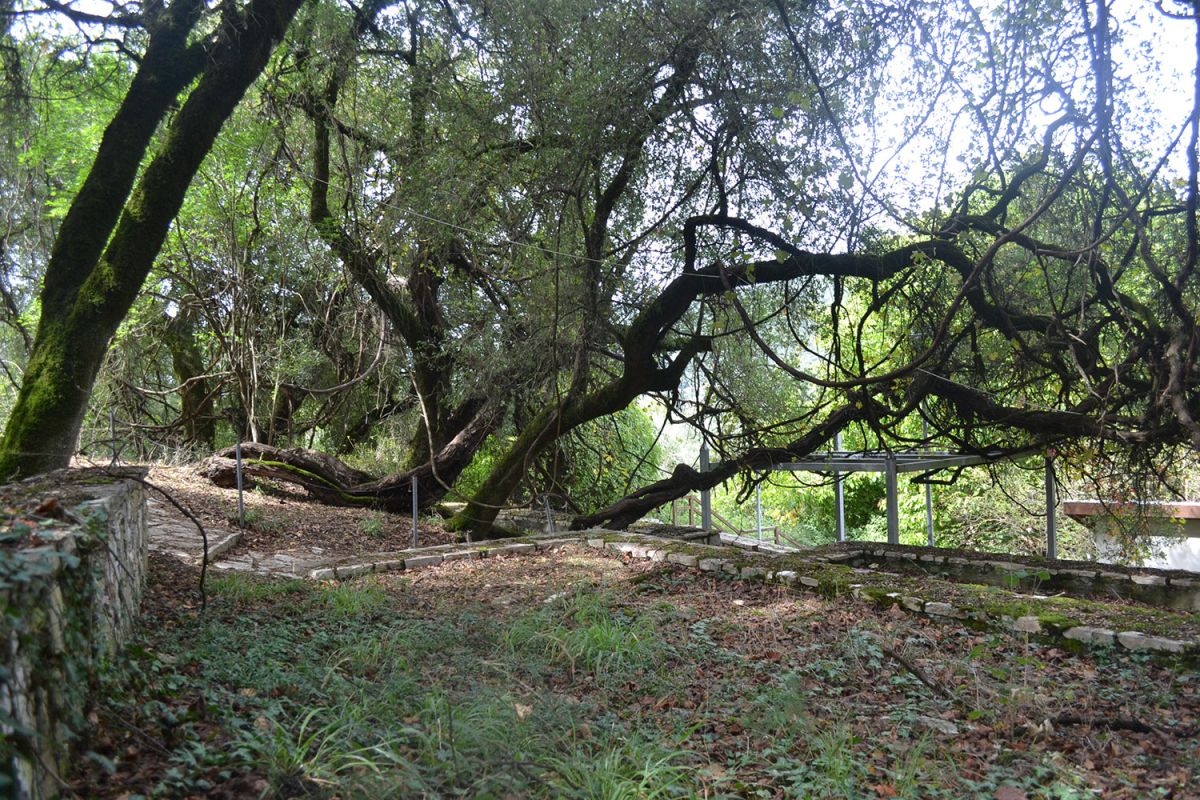
The Vine of Pausanias
The vine (Vitis vinifera) is estimated to be about 3,000 years old and certainly is over 2,200 years old, since already in 160 BC. Pausanias included it in "Arcadica" as a "curious phenomenon" because of its size! ...
ΤThis vine, however, also included by the mythology that mixed it into many myths, such as Hercules, who chased the chrysoceros chrysinitis deer and reached that vine, where the long hair of the fellow was confused and it got arrested. Hence the name of the position "unter".
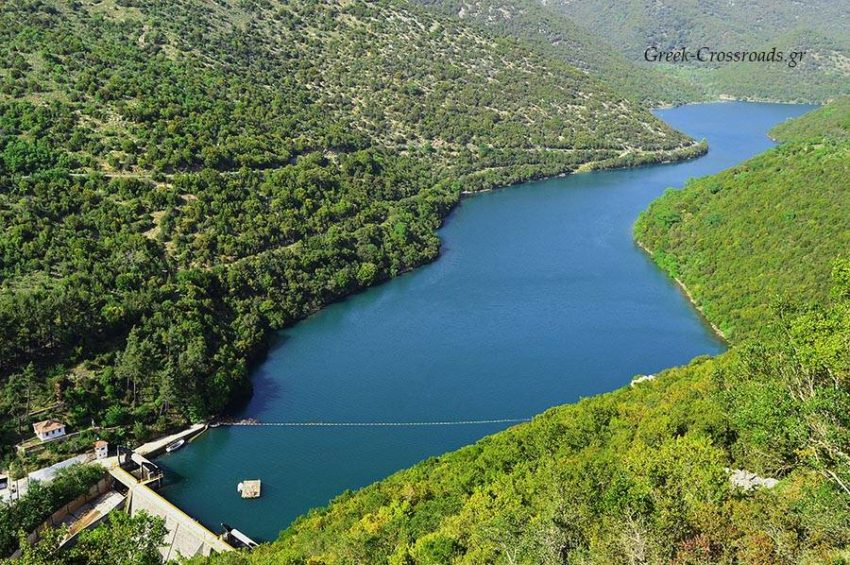
The river-lake and the bridge of Kyra
Even the historical traveler Pausanias who visited this place around 174 AD refers to the Ladonas River in "Achaia", "There is no river more beautiful in Greece or elsewhere".
The bridge of Kyra ...emerges from autumn onwards. It is 55 meters long and 2.15 meters wide. For centuries it was bordering the north with the central Peloponnese.
Day 3 | FROM THE OAK FOREST OF CENTAURS AND THE LABORS OF HERCULES TO THE SANQTUARY OF ZEUS
Foloi's Forest, Erymanthos mount, Ancient Olympia | Overnight: Olympia
Departure from the scenic village of Foloi and tour to the unique oak forest of Greece.
Route OffRoad and crossing through the river Erymanthos, so early in the afternoon we are in ancient Olympia, to visit the museum and the sacred venue of the Olympic Games of antiquity.
-
Foloi's Forest, Olympia
30 km National Road
15 km Dirt-Road and Off-Road -
Oak forest of Foloi
River Erymanthos -
Ancient Olympia
Olympic Games
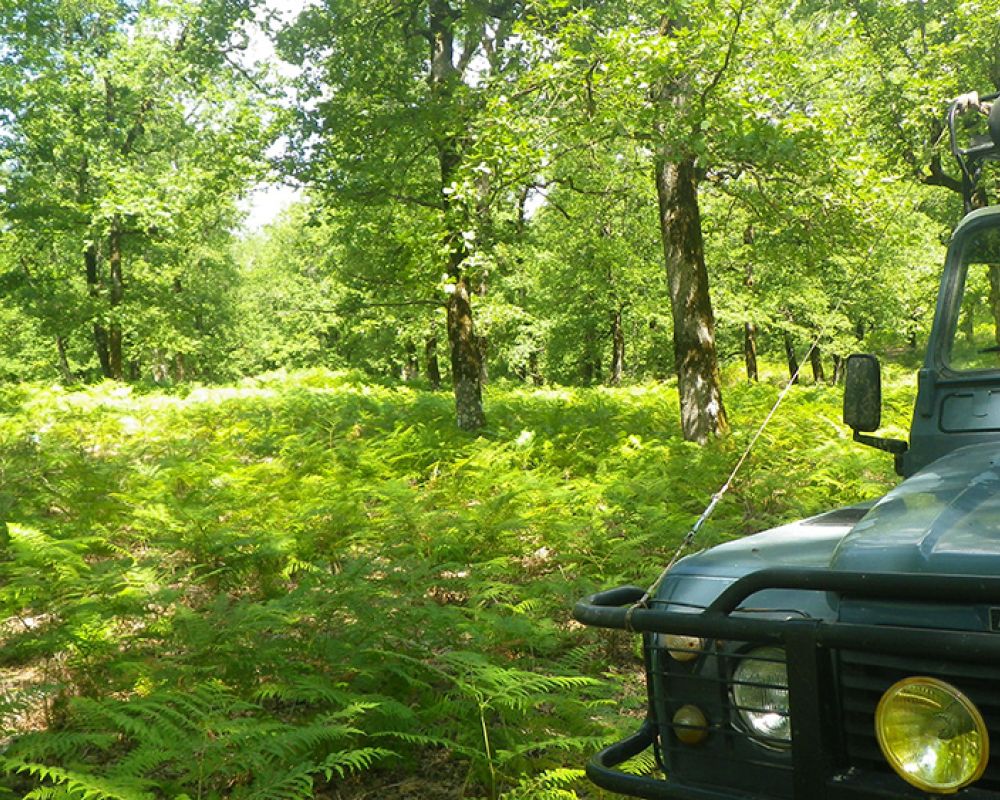
Oak forest of Foloi
The endless forest (the Forest of the Centaurs) is the famous forest of Foloi, a forest full of myths and traditions, in which the kingdom of Centaurs Folo (the son of Sylinos and the nymph Melia), the good Centaur who hosted the mythical hero Hercules when he pursued the Erythmanthus.
The oak forest of Folois is a protected area from the NATURA 2000 network. It is located at an altitude of 688 m on the moumtain Folo of Ilia and occupies an area of 33.000 acres. The crossing of the rivers Erymanthos and Ileiakos Ladonas creates a unique environment. It is the only wild oak forest in the Balkans, with old oak clusters.
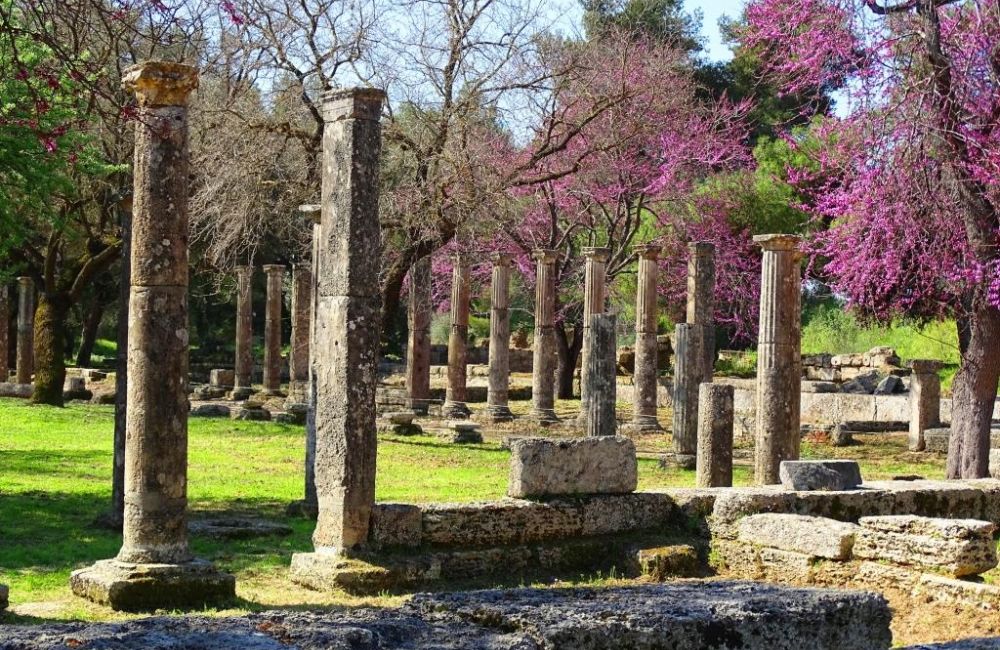
The archaeological site of Olympia
Olympia was the most glorious sanctuary of ancient Greece dedicated to the god Zeus. It was the venue for the Olympic Games that took place in the framework of the Olympics, the most important celebration of Greeks during most of the antiquity. In Olympia, in the magnificent temple was the golden ivory statue of Zeus, a work of Pheidias, which was known in antiquity as one of the seven wonders of the world. The starting point of the Olympic Games is placed in 776 BC. and was held every four years.
Day 4 | THE TRADITION, THE NATURE, and THE HISTORY OF WESTERN PELOPONNESE
Mount Mainalo, Mountainous Arcadia | Overnight: Stemnitsa
From ancient Olympia, off-road alongside the Alfios River to the picturesque stone-built villages of Arcadia, Andritsaina and Karytaina.
Route to the gently sloping mountain slopes of Mount Mainalo to the village of Kolokotronaioi where we visit the house of the great chieftain of the Greek Revolution of 1821.
Then there is the gorge of Lousios River, where Zeus was bathing in mythology.
On its steep sides we will admire the two historical monasteries of Philosoph and John Prodromos, built opposite to the steep cliffs of the gorge and the monastery of Emialoi, which dominates as a fortress.
Stop at the tradional village Dimitsana, one of the most beautiful mountain villages of Arcadia.
Accommodation in Stemnitsa, one of the most picturesque stone villages in the Peloponnese.
-
Mountainous Arcadia
65 km Paved Road
25 km Minor Dirt-Road and Off-Road -
Gortynia region
Lousios Gorge -
Stone-built villages of mountainous Arcadia
Hydropower Museum -
Monastery of Philosoph & Virgin Mary of Emialoi
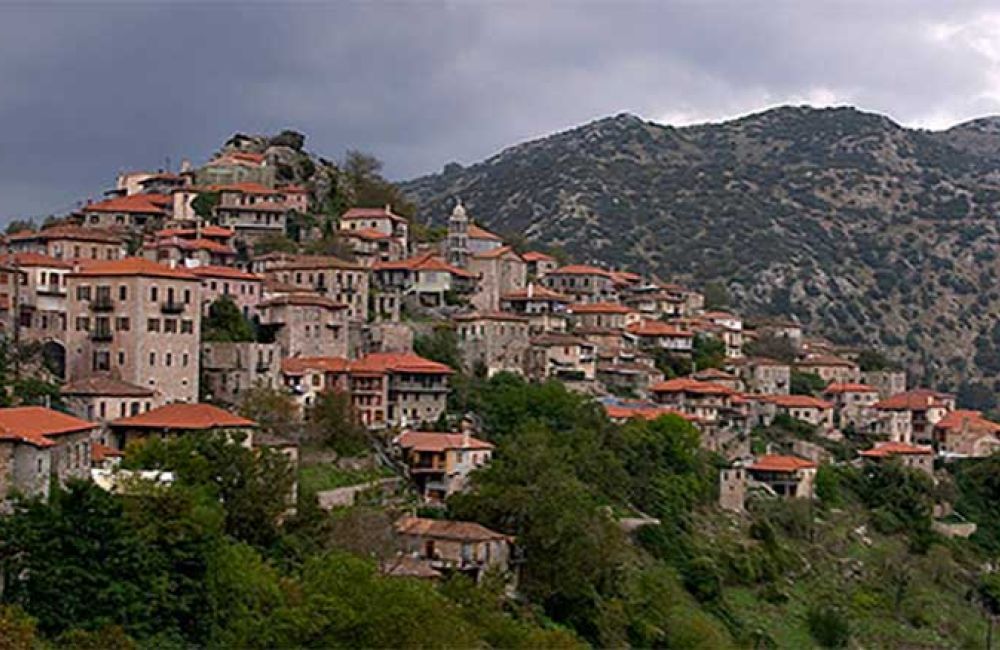
The stone-built villages of Arcadia
Karytaina, Stemnitsa, Dimitsana, Libovisi, picturesque stone villages. A place rich in modern history. Here is the ancient Gortyn, the famous in antiquity sanctuary of Asklipios.
Dimitsana, a historic town, known since the tenth century, built on ancient Tefthida, Dimitsana spreads amphitheatrically over the river of Lousios and is a lively museum of Byzantine art, folklore, architecture.
Stemnitsa at an altitude of 1100m. The traditional architecture, the mansions, the Byzantine churches, the picturesque streets, the stone celestial trees and the magnificent view of the peaks that surround the village are fascinating.
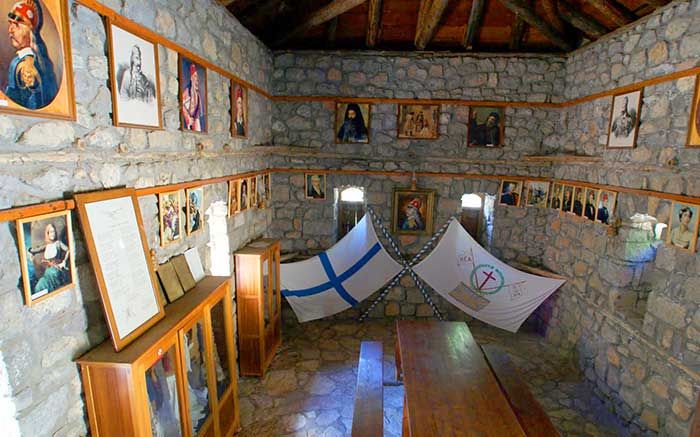
Libovisi
Laced in the fir-tree forest and within the main gorges of Mainalon, at an altitude of 1200 meters, between Chrysovitsi and Piana and in a beautiful and inaccessible location, there is the village of Kolokotronaioi where we visit the house of the great chieftain of the Greek Revolution of 1821.
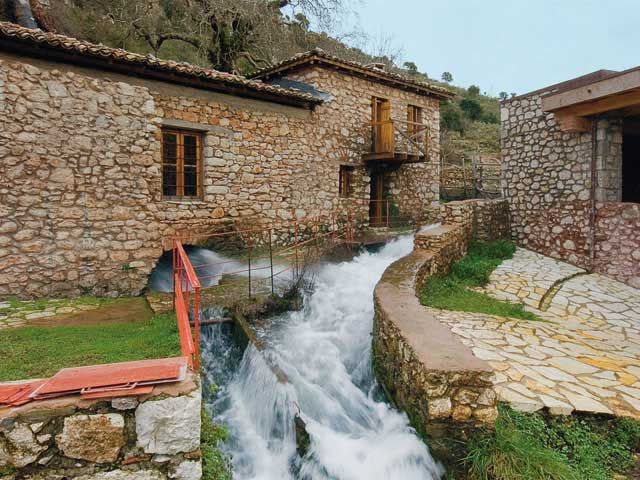
Watershed Museum
In an idyllic setting with running waters, is included the Watershed Museum that highlights the basic pre-industrial techniques in water use as the main source of energy for the production of various products.
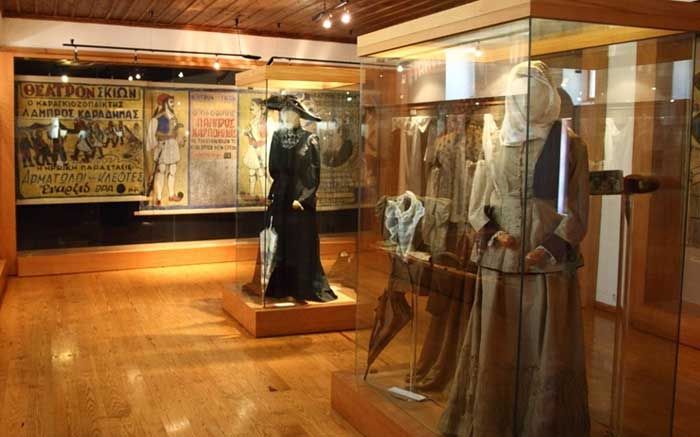
Stemnitsa - Folklore Museum
In Stemnitsa, the Folklore Museum, housed in an 18th-century stone mansion. Presented representations of traditional workshops, interior of the Stymnitsa House and post-Byzantine icons, metalwork, ceramics, woodcarving, embroidery, costumes, ecclesiastical utensils, shadow theater figures by Karagiozis player Lampros Karadimas.
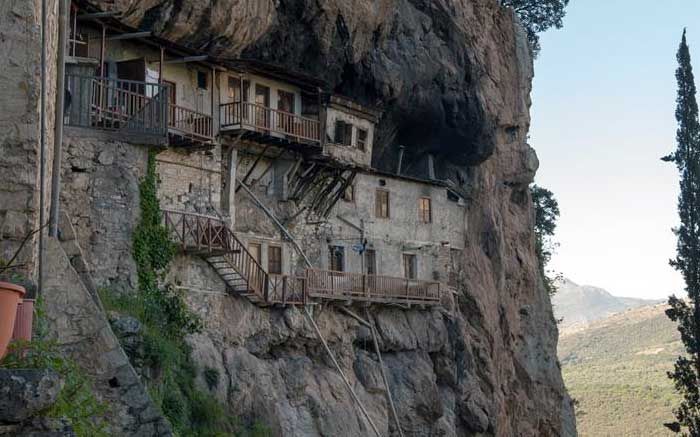
Monastery of Panagia Filosofou
South of Dimitsana, in a rock cavity of the gorge that runs through Lousios River there is ruined one of the oldest and most historic monasteries of Greece, the old Monastery of Panagia Filosofou. It was built in 963 and was founded by Ioannis Lambardopoulos-Philosopher and Protokritis of Nikiforos Phokas. It was characterized as a cruciform, but today it is preserved the 10th century Byzantine chapel with its wall paintings.
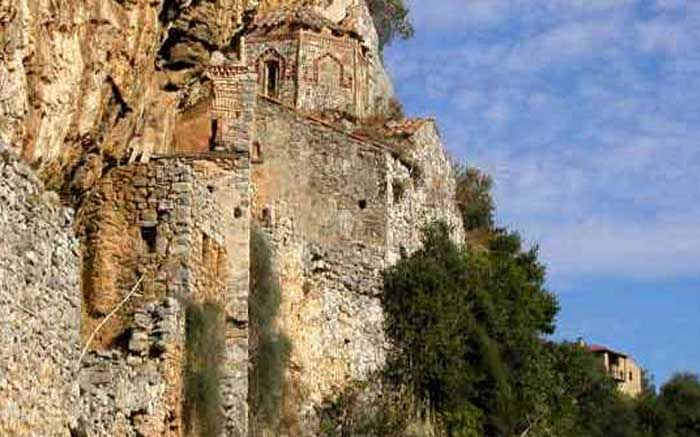 Close to the ruins of the old monastery is the New Monastery of Philosopher, which existed before 1691. Only the Byzantine church is preserved, with rich illustrations. At the monoporous, this is the area of the old monastery, and along the gorge south of Lousios there were caves and a number of hermitages that were destroyed by the raids of the Slavs in the 7th and 8th century.
Close to the ruins of the old monastery is the New Monastery of Philosopher, which existed before 1691. Only the Byzantine church is preserved, with rich illustrations. At the monoporous, this is the area of the old monastery, and along the gorge south of Lousios there were caves and a number of hermitages that were destroyed by the raids of the Slavs in the 7th and 8th century.
The region became center of education and spiritual culture during the Ottoman occupation, when it served as a Hidden School. Seventy chief priests and seven Patriarchs attended the Hidden School of Dimitsana.
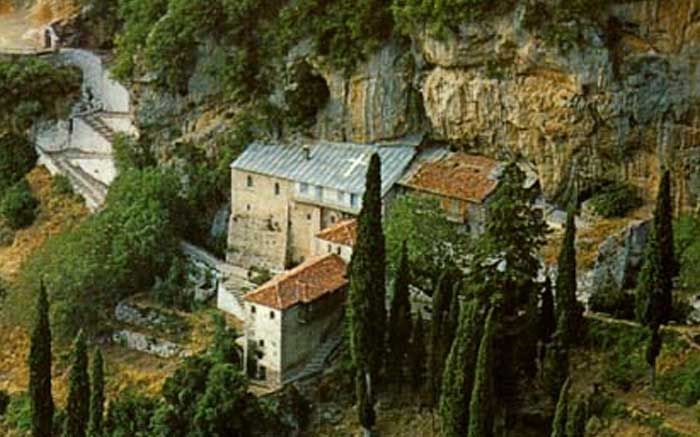
Monastery of the Virgin Mary of Amialon
The Monastery of the Virgin Mary of Emialoi is 2.5 km southeast of Dimitsana, a few meters to the right of the stream bed that descends from Zigovitsi. It was founded in 1608 by the hieromonk Gregory Kontogiannis and his sister, nun Eupraxia Paisia Kontogianni, who came from the village of Emialoi in the county of Messinia, from which it was named after the monastery.
The monastery was first built in the rock, where today the visitor can see enough of the ruins of the first cells. Today it has another look, since newer constructions have been built. Even the katholikon has been extended in relation to the original dimensions, while the wall painting is from the year 1608. It is kept in a very good condition, it is a sample of Byzantine iconography and belongs to the art of the Cretan School, while the wooden sculpture of the katholikon is of particular interest.
The work of the Monastery of Emialoi over the centuries was great. It provided great services during the years of the Greek slavery, but also in the struggle for the liberation of the nation. It assists in the day-to-day activities of local residents and participates in the rescue and dissemination of culture.
Day 5 | In the routes of Olive tree, THE ANTIQUITY AND THE NYMPHS
From the mountainous Gortine to the coast of the Peloponnese | Overnight: Pylos
Departure from Stemnitsa to the village of Andritsaina with its stone-built mansions to climb to the ancient temple of Epicurus Apollo.
After visiting the archaeological site, next stop at the unique Neda gorge, to walk up to the waterfalls and the lakes that are formed.
Then we pass to the gentle landscapes of Messinia, the area that is famous for producing excellent quality virgin olive oil with the smooth hills and olive groves to head to ancient Messina passing by the ancient Arcadian Gate - as did the ancient - to go south to the seaside medieval Pylos in the bay of Navarino.
-
Mountainous Arcadia - Messinia
70 km Paved Road
25 km Dirt-Road -
Neda Gorge
-
Temple of Epicurean Apollo
Arcadian Gate
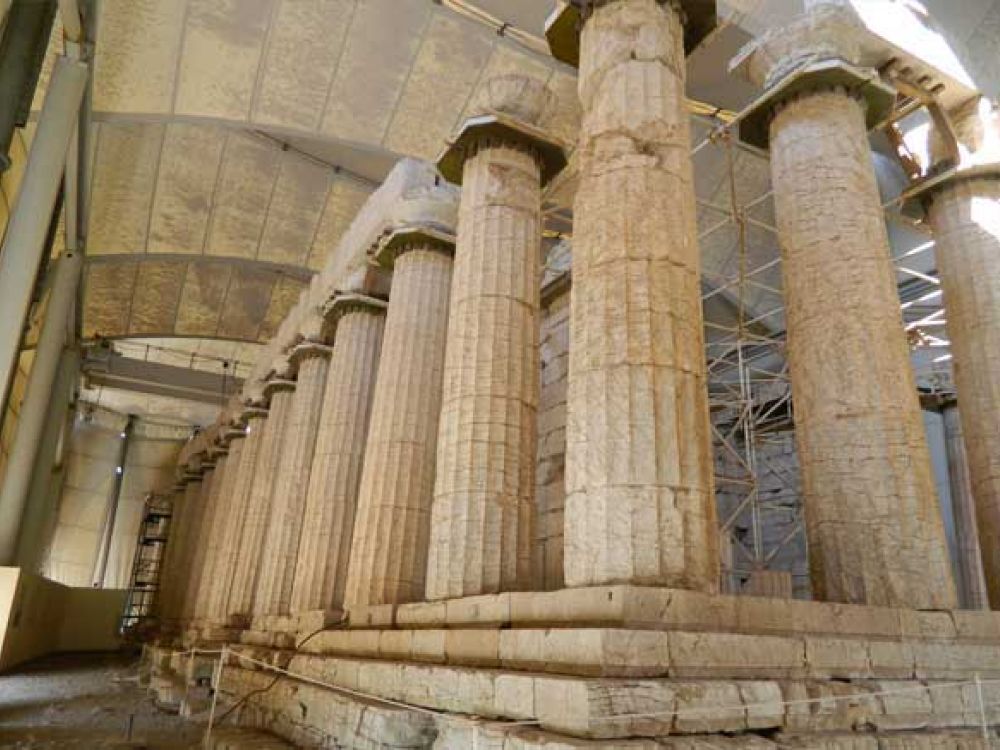
The imposing rotating temple at 1130m
The nude, rocky landscape that was called in the ancient times Vassai (small valleys) is one of the most important and imposing temples of antiquity, dedicated to Epicurean Apollo.
ΤIn the 7th century BC a sanctuary of Apollo Vassita that the neighbors Figaleis had founded, who worshiped the god with the name Epicurios, ie assistant, supporter to the war or illness. The first temple also experienced later phases, around 600 BC and around 500 BC, of which numerous architectural members are preserved. The architect of the temple is mentioned by Pausanias Iktinos.
It rotates around itshelf 50.20 axis, as is the annual equinox transition, aiming to constantly view the same astral point.
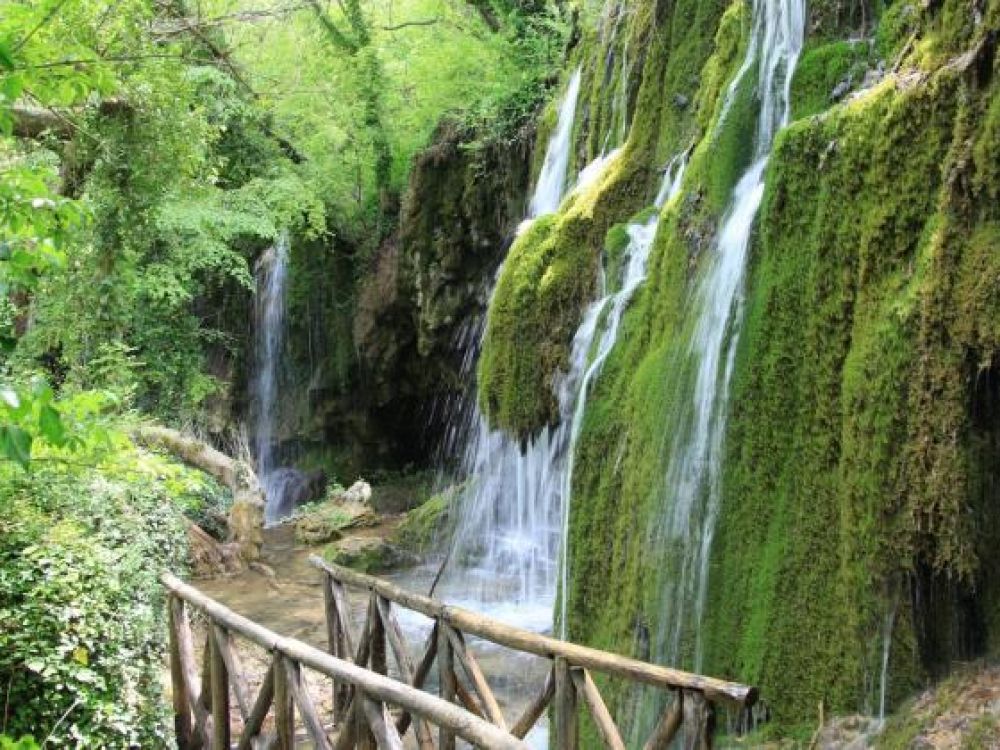
The river of the Nymph
the river Neda (one of perhaps two rivers with a female name, the other is considered to be Arapitsa in Naoussa.) Neda was the nymph that Rea her son Zeus entrusted to save him from the Saturn mania who was eating his children so that non of them could no longer challenge his sovereignty and wanted to take the throne of the leader of the Titans.
It reaches a length of 32 kilometers and much of it crosses a gorge with very rich vegetation. Platanos, wild berries, figs and coumarins abound in the gorge, creating a landscape of exceptional beauty. In the run of its waters, waterfalls are formed with the largest to be near Figaleia.
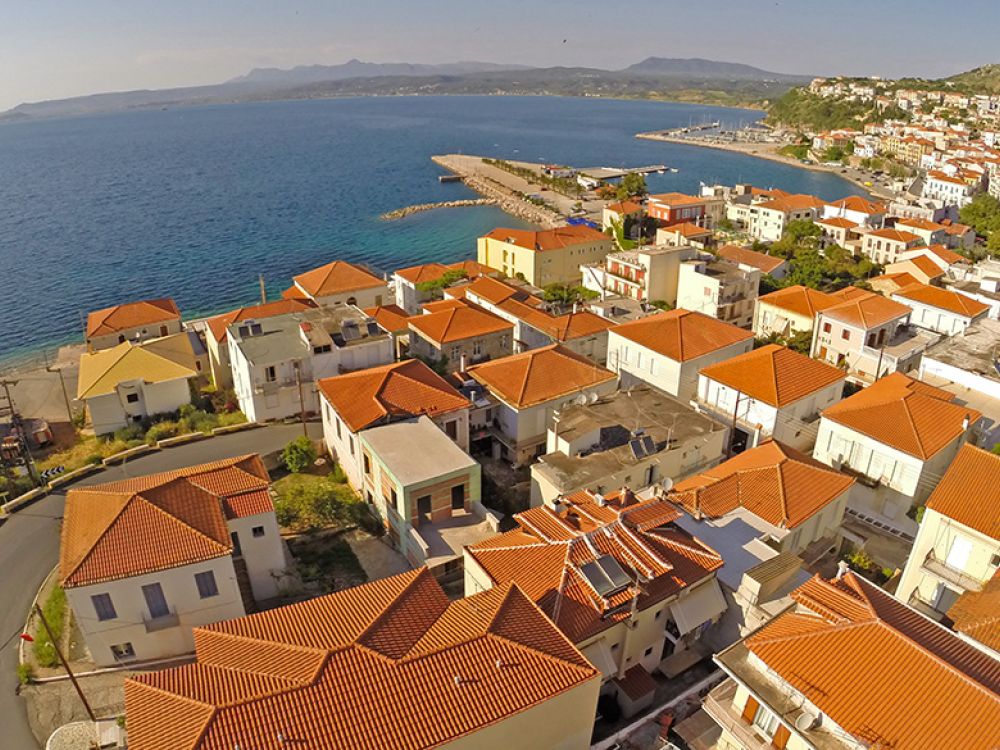
A state of island color
Small picturesque seaside town, historically known and with the Venetian-Italian name as Navarino. Amphitheatrically built at the south opening of its bay, where the historic naval battle took place, which decisively contributed to the liberation of Greece from the Turkish occupation and is defined by the island of Sfaktiria, but also the Battle of Pylos and Sfaktiria in 425 BC between the Athenians and the Spartans and ended with the victory of the Athenians and the surrender of the Spartans.
Pylos is the largest natural port of the Peloponnese and at the same time one of the most interesting tourist destinations of Messinia, thanks to the glorious history and the rich natural beauties of the region.
Day 6 | | STONE TOWERS, SILENT VILLAGES AND BOATING IN THE BUSH
The Mani area | Overnight: Itilo
We leave Pylos and Sfaktiria and then after passing the area of Kalamata we enter Messinian Mani.
Landscapes in particular, separate. Stone tower houses. Mountains, beautiful beaches. These are some of the features that make up the beauty of the picture in the Messinian Mani!
Going to Itilo and after visiting the cave of Diros, we return to picturesque Itilo for accommodation and dinner.
-
Messinian Mani
70 km National Road
10 km Minor Dirt-Road -
The villages and the coasts of Mani
Diros Cave -
Tastes of the Sea
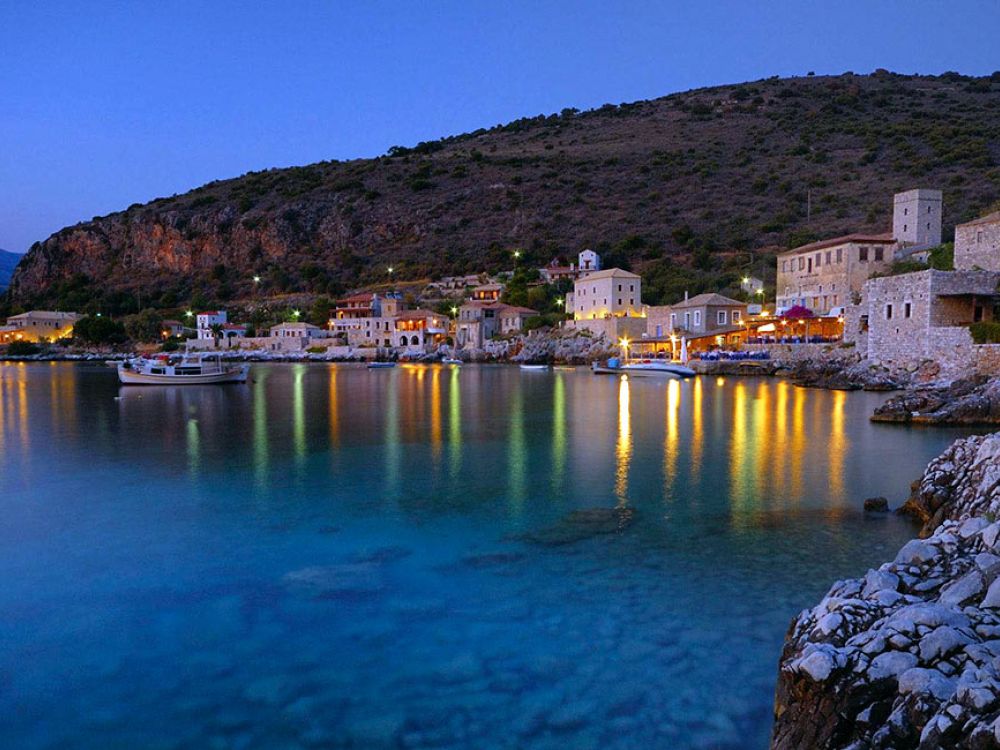
The village of Itilo and the area of Mani
Itilo stands out for the picturesque and unique landscape, the remarkable cuisine of Mani and the warm hospitality of its inhabitants.
A characteristic feature of the Itilo area is the 67 traditional stone villages that enchant the visitor. A visit to the castles of the area, the Byzantine and Post-Byzantine churches with the magnificent hagiographies, the towers that stand angry over the passage of the years, and a stroll through the stone cobbled streets and paths inspire you into the rich history of the place.
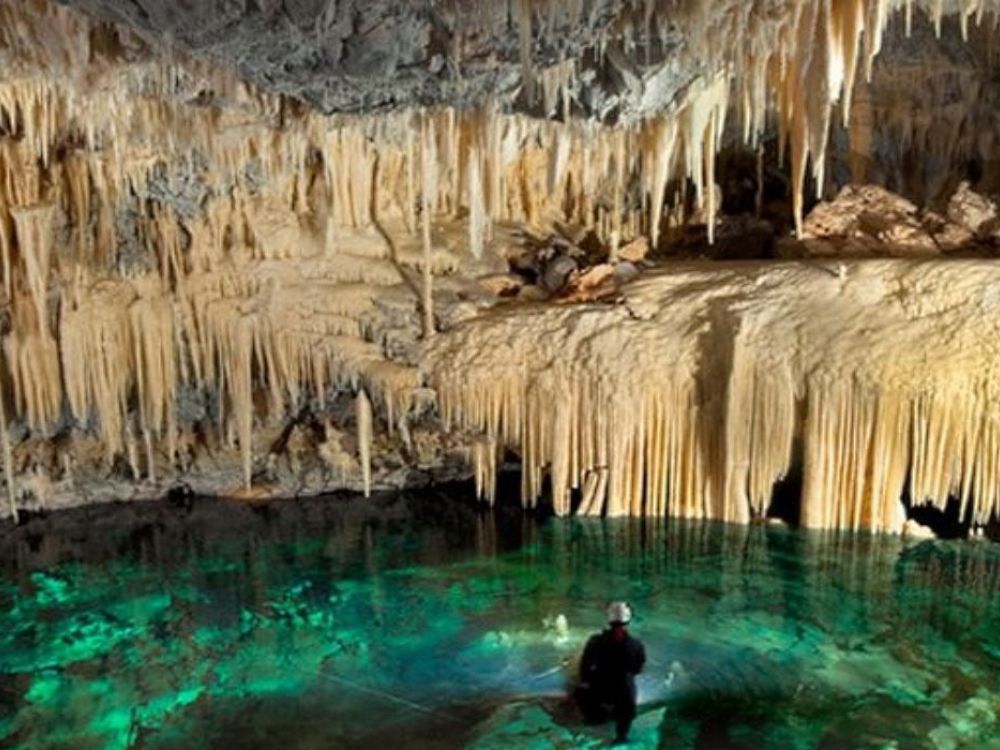
The lake Cave of Diros
It is the underground riverbed of the Glyfada river, which flows into the sea after forming small lakes in the land of Mani. The illuminated stalagmite formations are enchanting and are accompanied by several names which help the visitor to perceive what they look like. We are left to the magic of the images, impressed by the work of nature, who patiently transformed this "stone forest". Then we disembark from the boat and follow the path to the land of the cave. We walk through the wonderful decoration with the colorful stalactites, stalagmites and columns.
DAY 7 | FROM TAYGETOS TO MOUNTAIN PARNONAS - HOLY MOUNTAIN OF SATURN
The mountains Taygetos and Parnonas | Overnight: Kosmas
From Itilo we cross Mount Taygetos, the largest mountain in the Peloponnese with its dense forests and we descend to the valley of Evrotas to cross its river.
Through provincial roads we ascend Mount Parnon.
A tour of the monastery of Elona, built on the steep cliff, and off road trips on the slopes of Parnonas to reach the mountainous village of Kosmas with the lush trees covering the whole village.
-
Mountain Crossing
60 km National Road
25 km Minor Dirt-Road -
Taygetos - Parnonas
-
Monastery of Elona
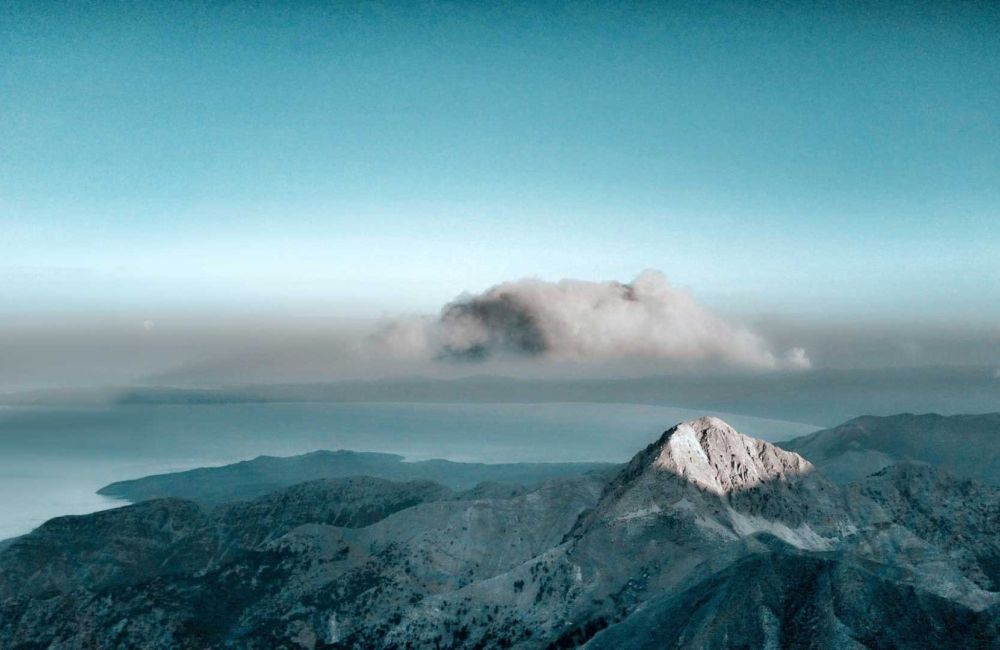
Taygetos
Also known as Pentadaktylos, Taygetos is the highest mountain range (2.407 m) of the Peloponnese, hiding beauties, nature and picturesque villages with a mountainous scent of Greece!
Paths, gorges, stone bridges, villages, routes, fir trees, blacksmiths, streams, small rivers ...
It was named after a daughter of Atlas, the nymph Taygeti. The fruit of Taygetus with Zeus was Lacedaimon, who gave her mother's name to the mountain.
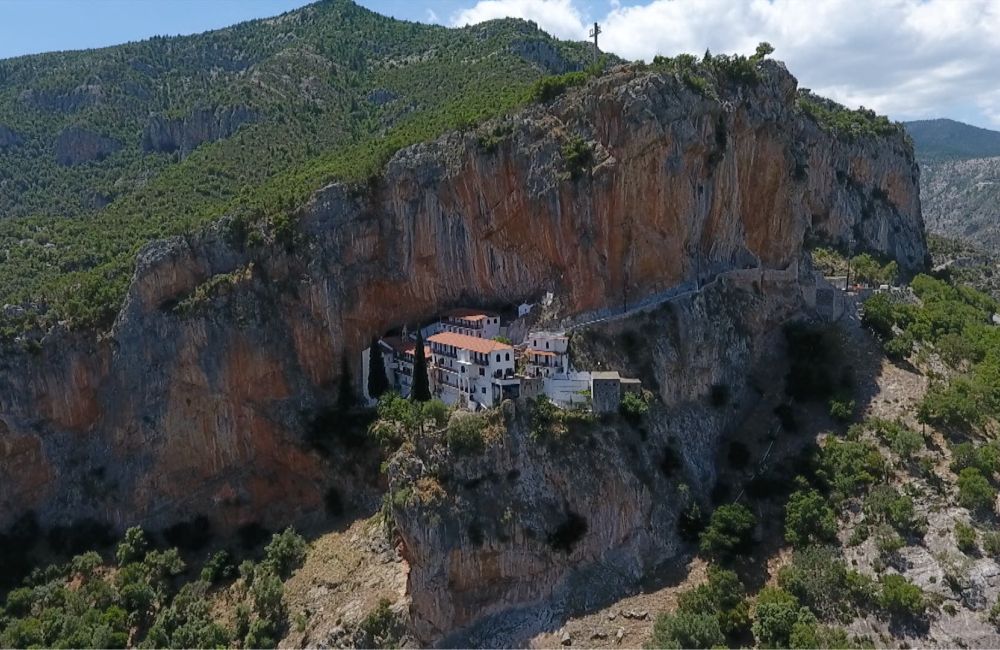
Monastery of Panagia of Elona
Around the middle of the route from Leonidio to Kosma village, the monastery of Elona, dedicated to the Assumption of the Virgin Mary.
It is built on the steep reddish rock of Parnon, and is one of the most impressive and imposing monuments of Arcadia.
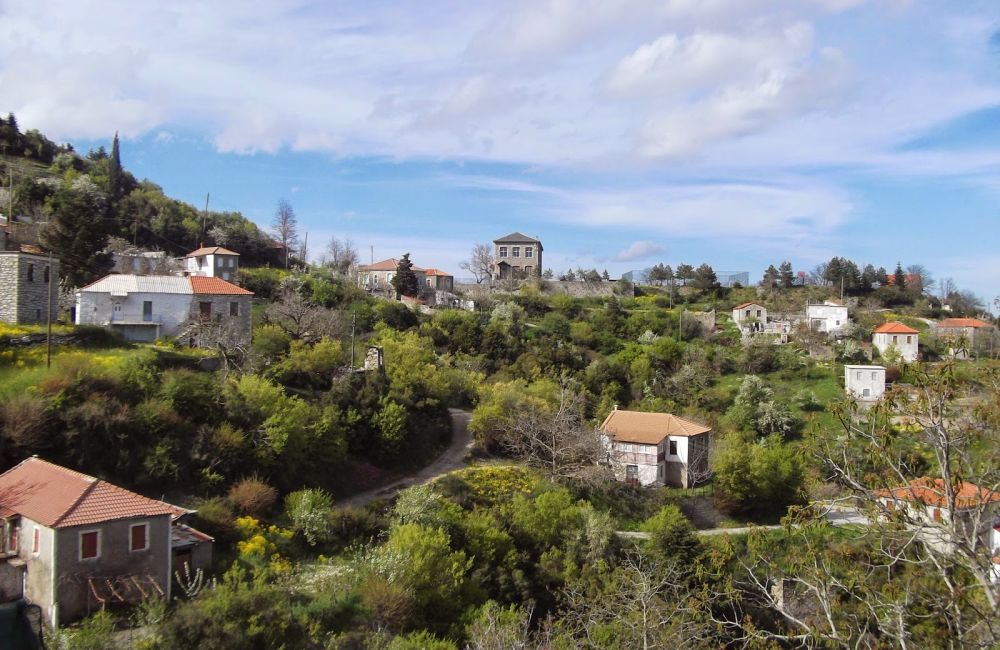
The village of Kosmas in Parnonas
From the most beautiful villages of Parnonas, climbed at an altitude of 1,150 meters, with the tiles of its red houses spreading among firs, chestnut trees and walnut trees.
In the Kosmas area there was the ancient city of Selini as Pausanias mentioned "Greek touring" 170-176 BC. On the hill of prophet Elias of the village there was a temple dedicated to the god "Apollo Maleati"
DAY 8 | FROM WOODED PARNON TO THE COASTLINE AND THE PLAIN OF ARGOLIS
Mount Parnon, Argolis and Mycenae | Overnight: Nafplion
A scenic route to the green of Parnon to Agios Petros, the mountainous village with its cobbled streets, the traditional houses and the gourd springs, to descend the provincial road that leads us by the sea.
The landscape changes by crossing the plain with citrus trees to visit the archaeological site of Mycenae. The route ends in the first capital of the Greek state, Nafplion, one of the most beautiful cities in Greece.
-
Countryside Journey to Argolis
60 km National Road
25 km Minor Dirt-Road -
Parnon
Argolis -
Archaeological site of Mycenae
-
the city of Nafplion
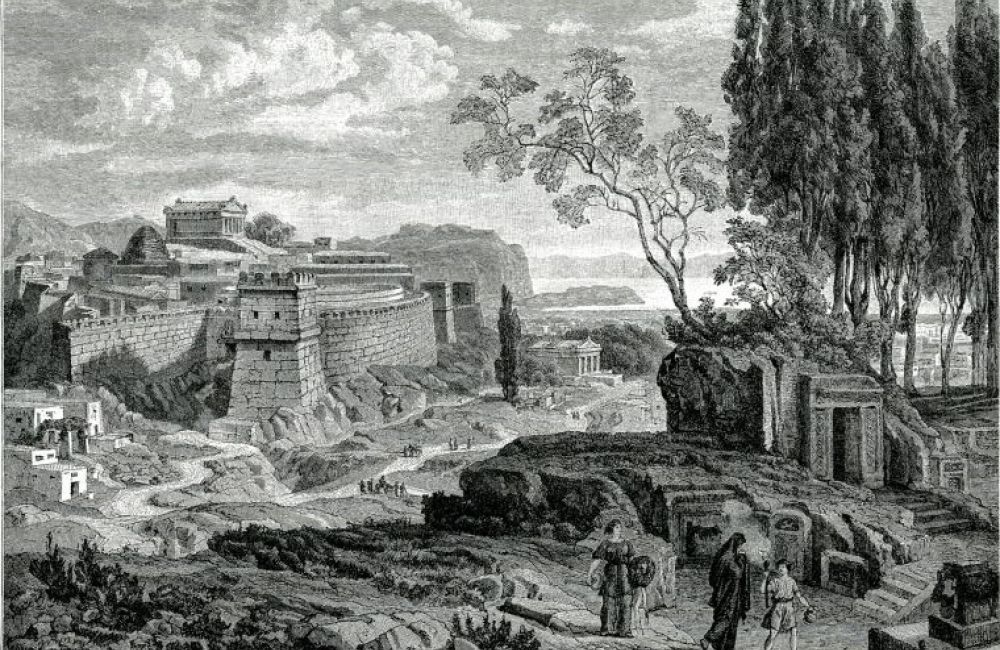
Archaeological site of Mycenae
The archaeological site of Mycenae with the palace of Mycenae, the most important center of the Mycenaean civilization, the second civilization on European soil.
It is the Late Bronze Age palace center that gave birth to one of the most important cultures in Greece, the most important center of Mycenaean civilization, the second civilization on European soil. It is included in the UNESCO World Heritage List.
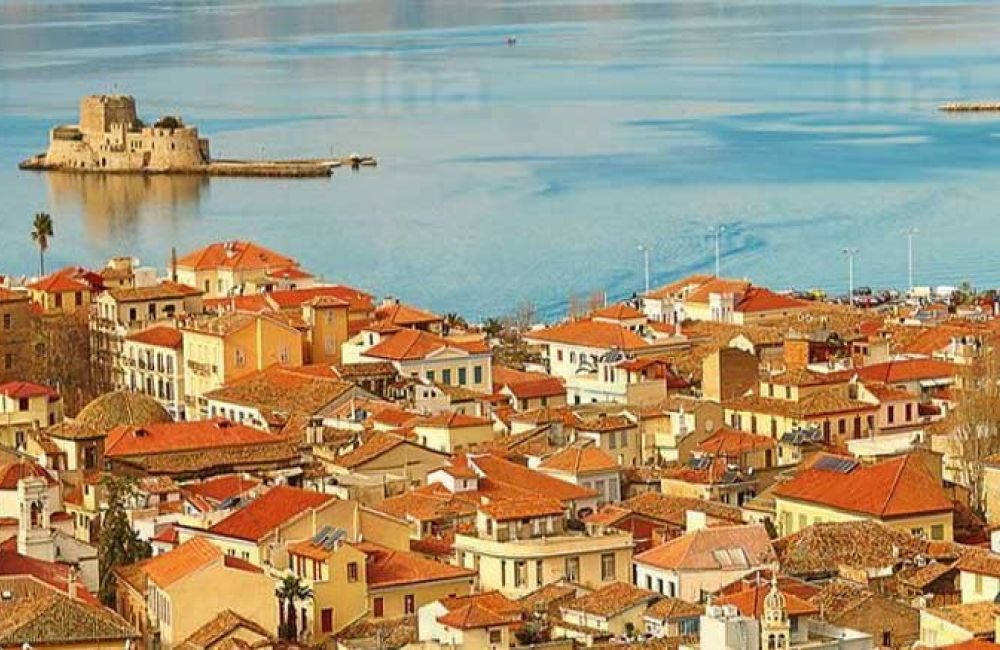
Nafplion with Palamidi and Bourtzi
The architecture of the old town of Nafplion is truly impressive and inspires strolls in the picturesque narrow streets with the imposing mansions and the historic paved square.
Palamidi, 999 steps above the city.
The famous Venetian fortress offers panoramic view of the old and new city of Nafplion.
Bourtzi, the "sea-tower" of Nafplion
The Venetian castle on the islet of Agioi Theodoroi was the residence of the Palamidi publicans, place of residence of two governments in 1824 and 1827, but also a luxury hotel.
DAY 9 | FROM THE OLD CAPITAL CITY TO THE NEW
The ancient theater of Epidaurusυ | Return: Athens
After breakfast, visit to Palamidi Castle to admire the island of Bourtzi from above and then we head east to visit the theater of ancient Epidaurus.
Before the return to Corinth for Athens, we have lunch at the beach, in old Epidavros.
-
The coast of the Saronic Gulf
160 km National Road Highway -
Theater of Epidaurus
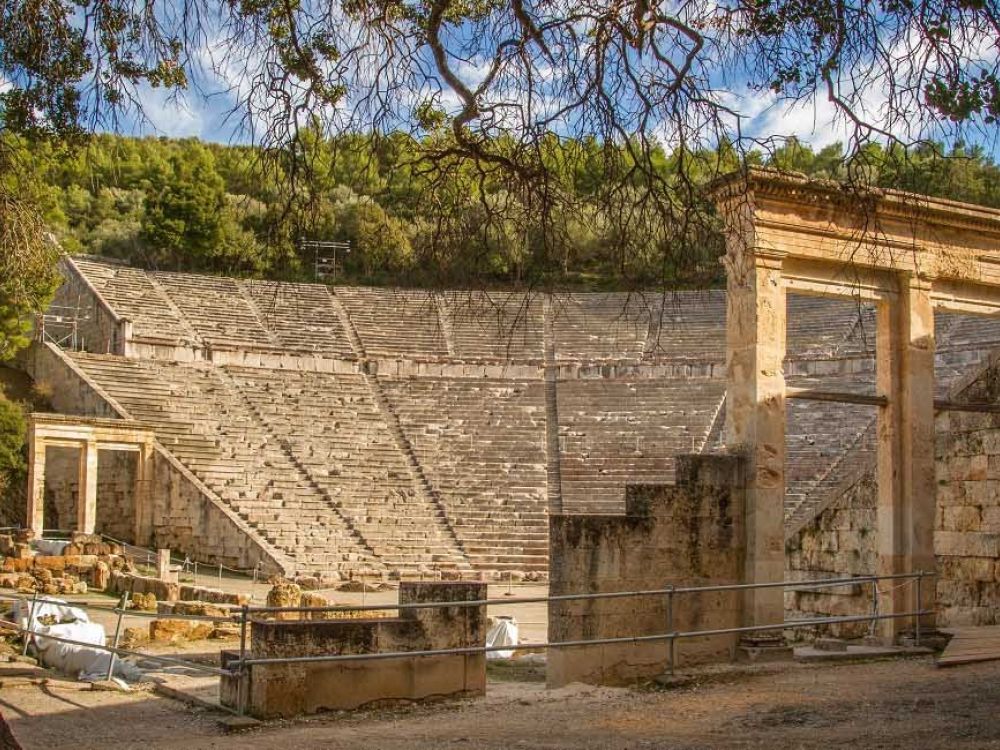
The Ancient theatre of Epidaurus
The ancient theater of Epidaurus is located at the southeast end of the sanctuary dedicated to the therapist god of antiquity, Asclepius, in the Asklepieion of Epidaurus.
Of all the ancient theaters the theater of Epidaurus is the most beautiful and best preserved. Designed for the fun of the patients, it had a capacity of 13,000 spectators.
Its wonderful acoustics, as well as the very good condition in which it is preserved contributed to the creation of the contemporary theatrical institution of the festival of Epidaurus.
We design & provide route and tour guiding on an experiential journey of 4x4 off-road exploration.
Including
Off-road escort vehicle and activity support equipment
Fully prepared and specially recovery equipped 4WD escort vehicles, driven by experienced off-road drivers.
Tour-guide/interpreter
2Way VHF & CB intercom for all cars.
During our excursions we have manage to establish a continuous two-way communication and tour guidance through all passengers of traveling group in all of vehicles.
First Aid kit
Provision for technical support
Technician for on-route support.
For damage requiring a workshop, we will have been informed locals to support.
Traditional Guesthouses & Flavors
ACCOMMODATION
On our tours, we choose to host our guest travelers in 3/4* hotels or traditional guesthouses, with the approach of authenticity and the spirit of traditional Greek home hospitality, usually in small villages not widely known to tourist. Of course all the conveniences for a pleasant stay are there for your satisfaction.
FOOD
The variety of flavors offered by each area gives the pleasure of our guests to visit Greek traditional cafes and taverns in the villages we visit all the local products and even to participate in the production of some of them. An unforgettable experience of taste and pleasure.
Full breakfast at the hotel.
Picnic or Light Lunch at chosen locations along routes.
Traditional food picnic, snacks, water, coffee.
Light lunch including traditional Greek delicacies, luncheon meats, cheeses, pies etc., dessert, water, coffee.
Dinner: Full meal, wine.
Our Route
We offer real travel experiences in Greece
You will join us as traveling companions and not as a tourist group and together we will explore and discover the wonders of Greece of present and past which you cannot find in any tourist guides.
Similar Trips
Στ αχνάρια του Μακεδονικού αγώνα
στην πιο όμορφη περιοχή της Ελλάδος.



